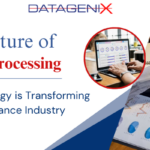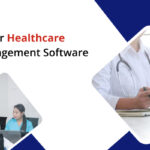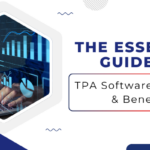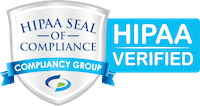Claims Software Systems: The Future of Smart Claims Handling
April 23, 2025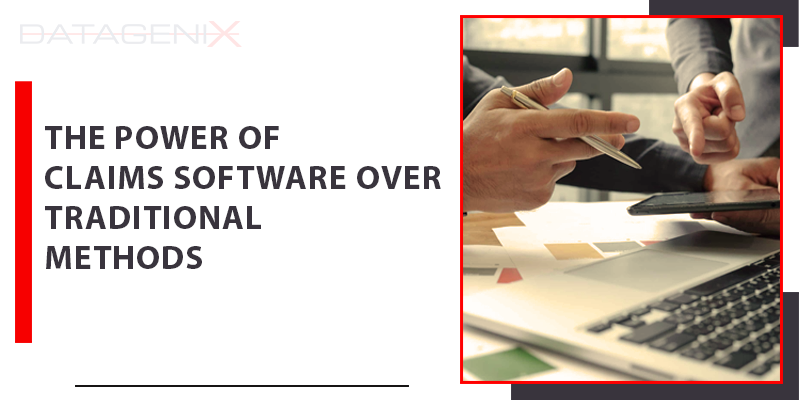
In the fast-paced world of insurance and healthcare, claims processing is a critical function that can make or break an organization’s efficiency and profitability. Traditionally, claims processing relied on manual methods, involving paper-based documentation, manual data entry, and fragmented communication channels. However, with the advent of claims software, organizations now have the opportunity to streamline their claims processing workflows, improve accuracy, and enhance customer satisfaction. In this blog post, we’ll explore the key differences between claims software and traditional methods, and why making the switch to claims software matters for organizations in today’s digital age.
Efficiency and Speed
One of the most significant advantages of claims software over traditional methods is its ability to significantly improve efficiency and speed in claims processing. Traditional methods often involve manual data entry, paper-based documentation, and cumbersome approval processes, leading to delays and inefficiencies. Claims software automates many of these tasks, enabling electronic submission of claims, automated adjudication, and real-time status updates. This streamlines the claims processing cycle, reducing turnaround times and improving overall efficiency. By making the switch to claims software, organizations can process claims faster, accelerate payment cycles, and enhance customer satisfaction by providing timely responses to claims inquiries.
Accuracy and Error Reduction
Manual claims processing is prone to errors and inaccuracies, which can have serious consequences for both insurers and policyholders. Common errors include data entry mistakes, duplicate claims, and incorrect coding, leading to claim denials, payment delays, and compliance issues. Claims software leverages advanced algorithms and validation rules to ensure data accuracy and reduce errors in claims processing. Automated validation checks flag potential discrepancies and errors before they escalate, allowing for prompt resolution and preventing costly mistakes. By minimizing errors and inaccuracies, claims software helps organizations improve claims processing accuracy, reduce rework, and mitigate risks associated with compliance and regulatory violations.
Cost Savings
Claims processing can be a significant cost driver for insurance companies and healthcare providers, especially when relying on manual methods that require extensive labor and resources. Claims software offers opportunities for cost savings by automating repetitive tasks, streamlining workflows, and reducing reliance on paper-based processes. With claims software, organizations can eliminate paper and printing costs, reduce manual labor, and optimize resource allocation. Additionally, claims software enables better resource utilization by reallocating human resources from routine tasks to more value-added activities, such as fraud detection, customer service, and strategic decision-making. By reducing operational costs and improving efficiency, claims software helps organizations achieve cost savings and improve their bottom line.
Enhanced Data Security and Compliance
Data security and compliance are paramount in claims processing, given the sensitive nature of healthcare and insurance data. Traditional methods of claims processing often involve paper-based documentation and manual handling of sensitive information, increasing the risk of data breaches and unauthorized access. Claims software offers robust security features, such as encryption, access controls, and audit trails, to protect sensitive data and ensure compliance with regulatory requirements, such as HIPAA (Health Insurance Portability and Accountability Act) and GDPR (General Data Protection Regulation). By centralizing data storage and implementing stringent security measures, claims software helps organizations enhance data security, reduce the risk of breaches, and maintain compliance with regulatory standards.
Improved Customer Experience
In today’s competitive market, providing a seamless and personalized customer experience is essential for retaining customers and building loyalty. Traditional methods of claims processing can be slow, cumbersome, and frustrating for policyholders, leading to dissatisfaction and churn. Claims software enhances the customer experience by offering self-service portals, mobile apps, and real-time updates, allowing policyholders to track the status of their claims and receive prompt notifications. Additionally, claims software enables faster claims processing and settlement, reducing the time and effort required for policyholders to file and resolve claims. By improving the customer experience, claims software helps organizations differentiate themselves in the market, increase customer satisfaction, and drive customer retention.
Conclusion
The switch from traditional methods to claims software represents a significant opportunity for organizations to transform their claims processing operations and achieve tangible benefits in terms of efficiency, accuracy, cost savings, data security, and customer experience. By automating manual tasks, reducing errors, optimizing resources, ensuring compliance, and enhancing the customer experience, claims software empowers organizations to stay competitive, adapt to evolving market dynamics, and deliver value to stakeholders. In today’s digital age, making the switch to claims software is not just a matter of convenience – it’s a strategic imperative for organizations looking to thrive in a rapidly changing landscape.
How Health Claims Management Software Transforming The Industry?
February 7, 2025How Claims Software Can Transform Your Claims Process?
January 29, 2025The Need For Healthcare Claims Management Software
January 13, 2025Reasons You Should Invest in Claims Management Software
January 7, 2025The Essential Guide To TPA Software Features & Benefits
December 24, 2024Claims Management Software: Key To Streamlining Your Business
December 18, 2024How TPA Software Solutions Transformed Medical Claims Management?
November 20, 2024

